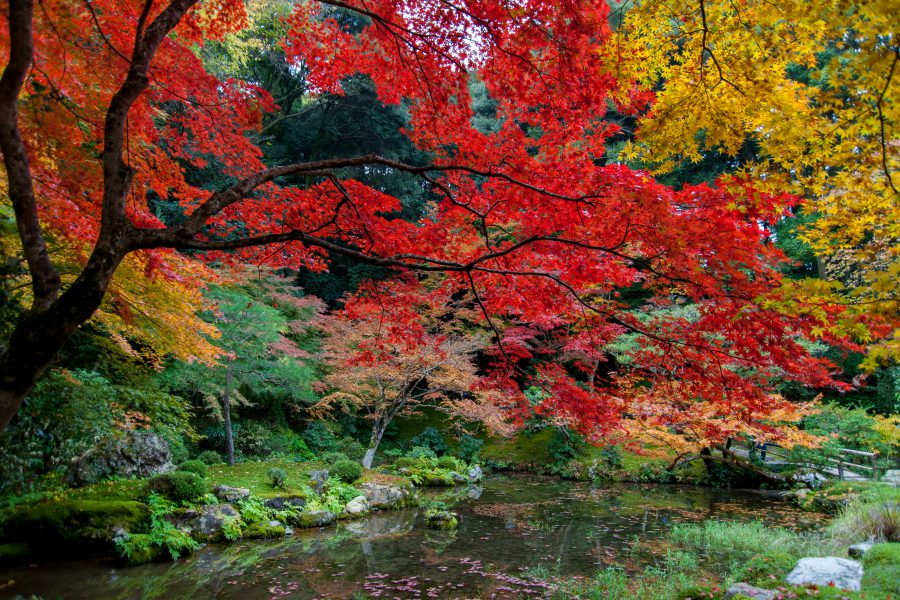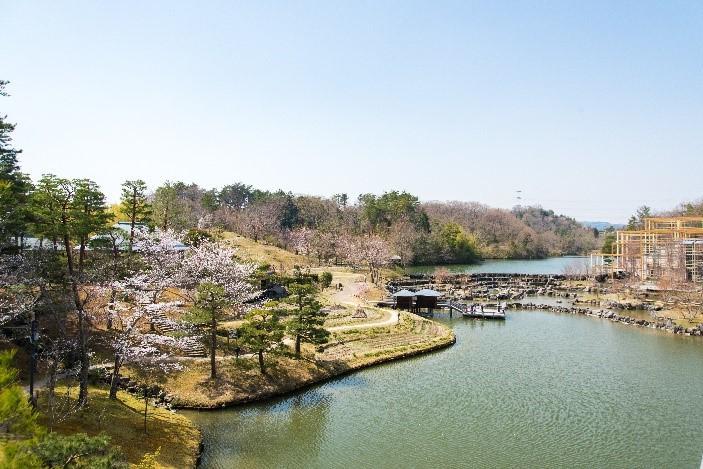Garden Knowing/
keywords
The Strolling Pond Garden

The garden at Nanzen-in Temple is a classic strolling pond garden of the medieval period. Today it retains much of its original atmosphere of profound tranquility surrounded in deep forestry.
The Strolling Pond Garden
In the beginning, there was water. Originally a seabed, the Kyoto Basin was gradually formed from earth flowing off the mountains and tectonic uplift over several millennia, resulting in abundant pond sources that well up from underground springs. So it wasn’t very long after the imperial capital’s founding in 794 that Kyoto’s court nobility began exploring the possibilities of moving around their pond gardens on boats and eventually of strolling through them over bridges. Intentionally or unintentionally, a garden tradition with profound potential for suggesting scenic transition and movement was born.
In the Japanese garden tradition, then, the strolling pond garden (chisen kaiyushiki teien) is so classically ubiquitous that it does not belong strictly to any genre or era. It’s more like a recurring design concept based not on viewing the garden from a single direction, but of entertaining guests with viewpoints that change as they walk around. Thirteenth century scroll paintings of the Diary of Murasaki Shikibu, famed eleventh century author of the Tale of Genji, depict the boat parties that Kyoto nobility held in their gardens. The fourteenth century saw the strolling pond garden’s emergence as a motif used to connect different together reception spaces along a circuitous garden path. And the seventeenth century witnessed the strolling pond garden’s evolution into a virtual compendium of Japanese garden styles, fusing together elements from pond gardens, dry landscape gardens and tea gardens, while transporting guests to a different world through representations of “famous scenes” (nadokoro) enjoyed while promenading the pond. This maximalist approach to the stroll garden reached its peak in the expansive “daimyo gardens” built by Japan’s domanial lords during the Edo period (1603-1868). By contrast, Japan’s modern period eschewed such grandiose symbolism in favor of strolling pond gardens that situated guests in familiar naturalist landscapes reproduced at their full scale.
Depending on their owner’s tastes and how they are intended to be used, strolling pond gardens can take on any number of forms today. Over the years, however, one thing that has remained constant is that the cost and skill required for watering and draining these ponds has spurred constant technical innovation in each age. Thus, creating environmentally and aesthetically viable strolling pond gardens today requires a technical know-how that is informed by a complete knowledge of this history.

Keihanna Commemorative Park's Suikei-en Garden is a cutting-edge strolling pond garden created using modern technology in 1995 for the 1,200th anniversary of Kyoto’s founding.
